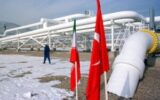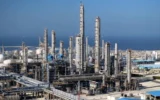
The CEO of the National Petrochemical Industries Company announced the focus of petrochemical companies on reducing gas consumption in the three northern provinces of the country and said: It is estimated that during the period of several months of implementation of the programs, approximately 2 million cubic meters per day will be achieved in reducing consumption and help in the sustainable supply of petrochemicals.

At the same time as the air gets colder and the continued use of heating devices, gas consumption in the domestic, commercial and industrial sectors, including in the fourth week of Azar, reached about 4.3 billion cubic meters; A figure that shows the continued growth of demand on the country's gas network in the cold half of the year.

Natural gas consumption in the household, commercial, and small industrial sectors increased to about 533 million cubic meters per day in the third week of December, and the highest consumption in this sector was recorded on December 15, with more than 546 million cubic meters.

While Recep Tayyip Erdogan traveled to Ashgabat to participate in celebrations of the 30th anniversary of Turkmenistan's neutrality, US and EU sanctions have cast a heavy shadow over Turkey's efforts to increase gas imports from Iran and launch a swap agreement with Turkmenistan; an agreement that was abruptly halted after several successful months, leaving Turkey's future winter energy supply uncertain.

Gas consumption in the domestic, commercial, and small industrial sectors increased as temperatures dropped in the second week of December, reaching a peak of 530 million cubic meters on December 12, bringing total weekly consumption to more than 3.65 billion cubic meters.

The Integrated Planning Manager of the National Iranian Gas Company announced: "With timely major repairs, complete coordination of operational departments, and implementation of smart projects, the gas network has been fully prepared for the cold season."

A spokesman for the Tehran Provincial Gas Company announced the gas cutoff for the railway company and the issuance of a warning to the Ministry of Roads and Urban Development on the first day of implementing the special patrols plan for gas consumption management.

The National Iranian Gas Company and the School Renovation Organization signed a memorandum of understanding to replace high-efficiency heating systems and improve engine rooms; the main goal of this cooperation is to reduce energy consumption and optimally manage gas resources in the country's schools.

Saeed Tavakoli announced at the signing ceremony of the National Gas and Education Memorandum of Understanding: 850 million cubic meters of gas will be injected into the network daily; the country's schools will become a model for optimizing energy consumption with high-efficiency and smart power plants.

With the partial interruption of gas supply to Zagros Petrochemical Company, the company's second production unit was taken out of service on December 25, 2021, and its operations were suspended until the gas restrictions were lifted. At the same time, Mobin Energy, which provides utility services to the complex, announced that there had been a reduction in the consumption of some ancillary services, but this restriction will not have a significant impact on the company's EPS.










